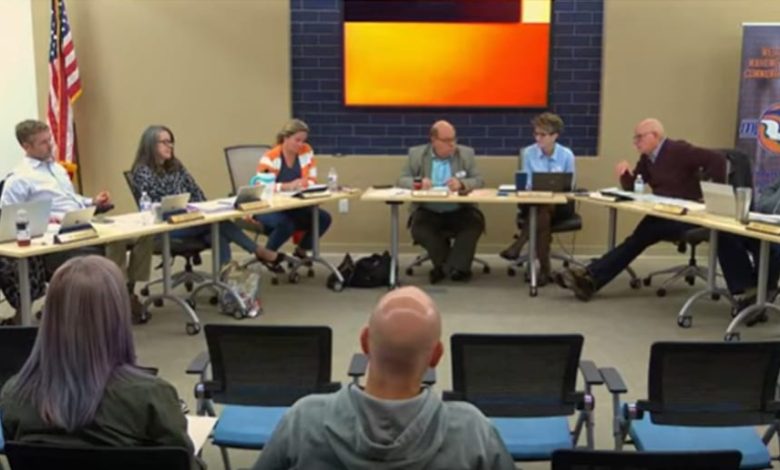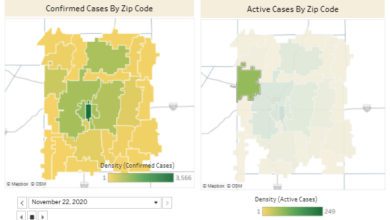Homeschool discussion ongoing for Mahomet-Seymour School Board

BY DANI TIETZ
dani@mahometnews.com
The Mahomet-Seymour School Board is continuing the conversation about what it looks like for the district to allow nonpublic school students to participate in extra-curricular activities.
The topic was first brought to the M-S policy committee on Sept. 30 by Board Member Colleen Schultz.
With instructions to gather approximately how many homeschool students were in the Mahomet-Seymour communities and do research on the policies of districts in the area, Schultz prepared for the Oct. 21 full-board meeting where board members also heard from community members on the topic.
Mahomet-Seymour alum Eric Nurmi said that growing up within the district, the opportunity to participate in athletics enriched his childhood and adult life.
“There were lifelong friendships that were developed as well,” Nurmi said.
Approximately 17 families are in the Mahomet-Seymour School District homeschool, according to Schultz’s research. Nurmi’s children are included in those figures.
“There are many families in the community that have chosen alternative methods of education for their children,” Nurmi said. “Some of it has to do with education, some of it has to do with lifestyle, travel, others have to deal with the work that the parents are doing.”
Nurmi said that the standards that parents have for their homeschool students are high.
His son, a junior, is currently taking college-level courses, and will continue to do so throughout his senior year.
The idea that he and his siblings might get to participate in athletics with their friends who currently attend public school is exciting.
Katy McCue, who raised four children in the Mahomet-Seymour School District, has been homeschooling her youngest child since second grade.
Although her daughter has been homeschooled, she grew up watching her siblings perform in band and drama. Today, the seventh-grader enjoys watching extra-curricular activities, even though she might not be able to participate.
“Julia is a Mahomet-Seymour Bulldog, even though she does not receive her education from the district,” McCue said. “Being a Bulldog is part of our family and our community identity.”
McCue’s daughter is currently a part-time Mahomet-Seymour student who takes first-hour band, but returns home for her core courses, such as English, math and science.
As a parent with a part-time student, McCue receives district emails. Around Labor Day, she received one about girls’ basketball tryouts. She said her daughter was “excited and hopeful” that she would get to try-out for the school-sponsored activity.
But because of her part-time status, the Mahomet-Seymour athletic director told the McCues that their daughter could not participate.
“I can teach her English at the kitchen table or set up a chemistry experiment in the garage,” McCue said.
“But I cannot conduct a basketball game with just the two of us in our backyard. Our school district sports and all other extracurricular activities are not something I can duplicate in my living room. For that we need our village; the village Julia is a part of.”
McCue said that the current district policy which states, “Nonpublic students, regardless of whether they attend a District school part-time, will not be allowed to participate in extracurricular activities,” is not welcoming.
“I am here to tell you our current district policy is not inclusive, and it isn’t fair,” she said.
“It shuts some children out. It excludes some children from rich experiences, they cannot get elsewhere. It deprives all our children opportunities to play and learn together in a non-academic setting where friendships can be forged and formed through teamwork and camaraderie.”
Dave Porter, a lieutenant colonel in the United States Army, said that using a four-percent national average of homeschooled children, Mahomet-Seymour, at most, would see 36 homeschool students who could potentially participate in 9-12 extracurricular activities.
He addressed the policy committees concern about cost to the district to ensure that each homeschool curriculum is adequate and that each student is keeping up on their studies.
Porter believes with the use of digital products and the internet, the district would be able to keep tabs on students at a minimal cost.
As a teacher and the director of children’s programming at Grace Church, Porter knows that one institution does not always fit the needs of every student.
He works with about 130 kids at Grace. While he said that he wishes all students, approximately 1,000 high school students, would show up to Grace, he knows that if they did, he would not be able to serve all.
But he also believes that with the board’s permission, allowing homeschool students to participate in extracurricular activities within the Mahomet-Seymour School District is something that will benefit everyone.
“This proposal is an opportunity to bring the whole community together, and an opportunity to innovate how we provide education in the 21st century,” Porter said.
Schultz’s recommended change to board policy 7:40 would read: “A nonpublic school student is eligible to participate in: (1) interscholastic competition, provided his or her participation adheres to the regulations established by any association in which the School District maintains a membership, and (2) non-athletic extracurricular activities, provided the student attends a District school for at least one course during the regular school term, excluding lunch. A nonpublic student who participates in an extracurricular activity is subject to all policies, regulations, and rules that are applicable to other participants in the activity.”
She stated that she took the language from the established Illinois Association of School Board’s press policy.
Current practices, such as participation fees and try-outs would remain in place.
After talking to homeschool families in the community for several weeks, Schultz estimated that there are 38 students K-12 within the district who are homeschool, but she did cite that the number could be inaccurate because according to state law, a family does not have to notify the public district if they choose to homeschool their child.
Only knowing of 17 families who homeschool their children, Schultz was able to gather that eight school-aged children from five families would currently be interested in participating.
Those who were younger than school-age were not surveyed.
“I believe that the additional staff for extracurriculars with an estimate of one to five students per program will not lead to any additional cost for staffing,” Schultz said.
She said that evaluating curriculum could be handled in the same way transfer curriculum are currently handled and that weekly eligibility reports could be sent electronically.
“And if we don’t have this policy, then the cost might be substantial,” Schultz said.
Schultz, who talked to M-S Athletic Director Matt Hensley about the policy, shared a story about a family with three girls who wanted to play sports within the district they lived in, but were denied because of the current status of policy 7:40.
The girls were enrolled in the district for one year. During that time, the district paid for their education and for their athletic participation.
Schultz believes that extra-curricular activities are provided in public school settings because the opportunities provide another piece of learning that is important to the growth of a student.
Board member Ken Keefe said another avenue that needs to be mentioned would be that some of the students who are currently enrolled in school because they get to participate in extra-curricular might change to homeschooled students if the policy is changed.
Quoting student-athletes from Mahomet-Seymour Junior High who were interviewed by the Mahomet Daily, Schultz read:
“I used to think running was the worst and I’d never get good at it; until I started working harder,” she said. “And I thought math was the worst and I’d never get good at it. But I was improving in running, and I kind of took that mindset into class as well, if I can improve at running, then I can improve at math.”
Schultz said this student’s ability to take what she learned in cross-country into her academic studies shows that athletics helps students realize that they can solve problems in other areas of their life, too.
She also believes that having homeschool students will diversify every child’s experience at M-S.
Schultz talked about how the U of I and Illinois State University encourage homeschool students to apply and feel welcome on campus because they bring a value perspective to the campus environment.
Superintendent Lindsey Hall included a table within the public board packet that showed districts that allow, or don’t allow homeschool students to participate in extra-curriculars on a part-time basis.
Hall said that she emailed district Superintendents to find out what the district allowed when Schultz found that some of the districts listed had contrary policies online.
Schultz said the problem with just adopting IASB press policy without discussing it is that schools could have a policy that is different than how they operate.
She also said that just because an inclusive participation policy is instated, it does not mean that people, such as homeschoolers, will take advantage of it.
Schultz went through the list to find the board policies for the schools mentioned, while also seeking out the policies of all 852 Illinois districts. Eliminating the K-8 buildings, she looked up policies for 479 districts.
She found that 137 districts did not have a policy online, 210 permit homeschooled students to participate in some way, 123 do not permit them to and five had a mixed policy that was difficult to decipher.
“So the whole point of that was to provide the information asked for by the policy committee about how prevalent this is,” Schultz said. “It’s actually very prevalent in our state, and it would not be a rule that’s out of line with how things are done in our state, it’s not breaking new ground. It would just be allowing some students from our community to take advantage of that and enrich our community.”
Upon the call for talks with other districts to see if other school districts do in fact have the nonpublic student participation policy and how the policy worked or did not work within each district, Board Member Meghan Hennesy stated that while it’s valuable to look at what other districts do, the Mahomet-Seymour School Board should be vested in what is best for the students in Mahomet-Seymour.
Board member Merle Giles wanted to know what the IHSA guidelines were.
Schultz said that students must live within the school district, must have the curriculum for five classes approved by the district and turn in a weekly eligibility report.
Giles said that he would be interested in the coach’s and administrator’s perspectives.
Hall was curious about the standards that the curriculum might be evaluated against.
Schultz said the standard the IHSA sets is that the schooling has to be appropriate for a child in our society. But the curriculum standard would only apply to those activities that require grade checks on a weekly basis.
Hall said there had been some valid questions that deserve some more exploration.
Giles asked for more information about the financial component.
When the M-S board considered this policy change years ago, they talked about state funding per pupil. With the Evidence-based funding model, per-pupil counts no longer apply to the funds school districts receive.
“So even if we have 30 more people, we don’t get more money,” he said. “Everybody pays taxes, we get that. It seems to me that the burden here is administrative in looking at things that are outside the norm.”
McComb wanted to hear from people who track eligibility to find out how difficult the process might be.
Schultz said that some of the policies delineated how that was done.
She added that each curriculum would not be individual as many homeschool students are part of co-ops.
Giles said that he appreciated the data.
“This is more than we’ve had,” he said. “You’ve put tons of effort into it. I think it helps a lot.”
Giles said that a poll of administrators would be helpful before the Nov. regular board meeting.
He wanted to have more information that would help fill in the “little holes” such as how it would impact different coaches and athletes.
Hennesy said that she doesn’t want to see the board “what if” the possibility to death.
“I don’t think that we would see the trend of more than half the schools allowing this if it was something that was super burdensome or something that was causing big headaches,” Hennesy said. “I think they would change the policy.”
Giles said that the discussion opened his eyes to becoming more receptive to the idea.
But, he just wanted to look at all the pitfalls.
“We can plan ahead of time to make it work best for us,” Giles said.





